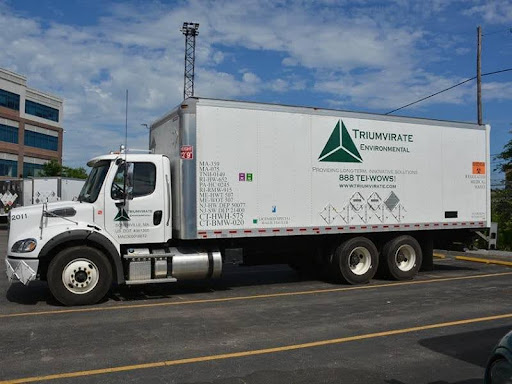The Role Of Waste Transportation In Hazardous Waste Disposal

Waste transportation plays a pivotal role in hazardous waste disposal, forming a critical aspect of environmental management. The safe, efficient, and regulated transportation of hazardous waste is necessary to ensure the protection of public health and the environment. Hazardous waste, by its very nature, is dangerous and requires special handling, containment, and disposal to avoid harmful exposure. Waste transportation serves as a bridge between the generating facility and the disposal or recycling site, ensuring that hazardous materials are moved securely without risking contamination or injury. In this context, understanding the significance, methods, safety protocols, and technologies associated with waste transportation becomes crucial for compliance with laws and for minimizing environmental impact.
Importance Of Waste Transportation In Hazardous Waste Disposal
The transportation of hazardous waste is critical to maintaining environmental health and safety. When handled improperly, hazardous materials can pose significant risks, from soil and water contamination to air pollution and public health issues. Efficient waste transportation ensures that such materials are safely moved from the source to treatment, recycling, or disposal facilities, mitigating any potential risks during transit. Moreover, waste transportation must adhere to stringent regulations that govern the containment, labeling, and transport of hazardous substances to prevent accidents or leaks. This safe handling prevents disasters and supports the broader goal of sustainability by reducing the potential for environmental damage.
Key Safety Measures In Waste Transportation For Hazardous Materials
Proper Packaging and Containment: Hazardous materials must be securely contained in leak-proof, labeled containers. This ensures that if accidents occur, the material does not spill or contaminate the environment.
Driver Training and Certification: Drivers transporting hazardous waste need to be trained in safety protocols and possess specific certifications. They are taught how to handle emergencies, conduct proper loading, and manage hazardous material handling with utmost care.
Vehicle Inspections: Before transport, vehicles are thoroughly inspected to ensure they meet safety standards and are free from any damage that might compromise their ability to safely carry hazardous materials.
Routing and Planning: Pre-planned routes are essential to avoid densely populated areas or sensitive environmental zones. These routes ensure minimal risk during transportation.
Emergency Preparedness: Having an emergency response plan in place is crucial. This includes equipping vehicles with spill containment kits and having rapid response teams ready to handle accidents.
Legal Compliance And Regulations In Waste Transportation
The transportation of hazardous waste is subject to various national and international regulations designed to protect public health and the environment. In the United States, the Resource Conservation and Recovery Act (RCRA) governs the transportation of hazardous waste, ensuring that waste handlers and transporters comply with stringent guidelines regarding waste labeling, tracking, and reporting. Internationally, the Basel Convention sets standards for the transboundary movement of hazardous waste. Regulatory bodies, such as the Department of Transportation (DOT) and the Environmental Protection Agency (EPA), enforce these laws to guarantee that hazardous waste is managed in compliance with safety standards throughout the entire transportation process.
Methods And Vehicles Used For Hazardous Waste Transportation
Specialized Tankers: Used for transporting liquid hazardous waste, these vehicles are equipped with double-walled tanks to prevent leaks and ensure safe containment.
Drums and Containers: For solid hazardous waste, various containers such as drums and barrels are used. These are often constructed of materials resistant to chemical reactions and corrosion.
Vacuum Trucks: These trucks are used for the transportation of both liquid and sludge-like hazardous wastes, with suction mechanisms to efficiently load and transport waste.
Refrigerated Transport: Certain hazardous materials require temperature control during transportation. Refrigerated trucks are used to maintain safe temperatures during transit to prevent chemical reactions or degradation.
Flatbed Trailers: Used for bulky or large hazardous materials, these vehicles ensure that waste is securely fastened to avoid spillage during transit.
How Waste Transportation Minimizes Environmental Impact?
By ensuring the safe, secure, and regulated transport of hazardous waste, the environmental risks associated with improper waste handling, such as spills, leaks, and contamination, are drastically reduced. Proper transportation limits the release of harmful substances into the air, water, and soil, protecting ecosystems and human health. Minimizing environmental impact is achieved through the use of specialized vehicles that prevent leaks and through the careful planning of routes that avoid ecologically sensitive areas. Additionally, careful attention to waste disposal at the final destination, whether through recycling, treatment, or disposal, further reduces long-term environmental damage.
The Role Of Technology In Enhancing Waste Transportation Efficiency
GPS Tracking: Advanced GPS tracking systems allow for real-time monitoring of transportation routes, ensuring that any deviations from safe routes are detected immediately, and quick action can be taken.
Automated Reporting Systems: These systems facilitate the seamless generation of compliance reports and real-time updates on the status of hazardous waste shipments, ensuring regulatory adherence.
Vehicle Maintenance Technology: Predictive maintenance technologies help prevent mechanical failures in vehicles, ensuring safe and efficient transportation of hazardous materials.
Remote Monitoring Sensors: These sensors track the condition of the waste being transported, including temperature, pressure, and any potential leaks. This real-time data allows quick action in case of emergencies.
Challenges In Waste Transportation For Hazardous Waste Disposal
Despite the advancements in transportation technology and safety protocols, there are several challenges involved in the transportation of hazardous waste. One of the primary challenges is ensuring compliance with diverse and sometimes conflicting regulations across different regions, especially when waste is transported across state or national borders. Another challenge is the risk of accidents, including spills, leaks, and vehicle malfunctions, which could cause environmental contamination. Additionally, the logistics of transporting hazardous waste, including route planning, vehicle availability, and weather conditions, can sometimes complicate the safe movement of materials. Ensuring consistent, high-quality driver training and securing public cooperation for hazardous waste transport is also a significant challenge.
Conclusion
The role of waste transportation in hazardous waste disposal is an integral part of maintaining safety and environmental protection. From adhering to strict regulations to employing advanced technology, the transportation of hazardous waste requires careful planning, specialized vehicles, and well-trained personnel. The goal is to minimize risk, ensure compliance, and reduce environmental impact while making certain that hazardous materials are disposed of in a safe, efficient manner. As technology continues to evolve and new safety measures are introduced, the future of hazardous waste transportation holds promise in further improving efficiency and minimizing environmental risks.
Note: IndiBlogHub features both user-submitted and editorial content. We do not verify third-party contributions. Read our Disclaimer and Privacy Policyfor details.







